At the heart of the Home Assistant vs. Google Home debate lies a fundamental choice: do you want unlimited customization and local control, or do you prefer seamless simplicity and cloud-powered convenience? The right answer depends entirely on what you value most—absolute authority over your devices and data, or an experience that just works right out of the box.
Understanding the Core Philosophies
Picking between Home Assistant and Google Home isn't just about choosing a product; it’s about aligning with a specific smart home philosophy. This choice will shape everything from which devices you can use and how you automate them to who controls your personal data.
The smart home market is booming, and these platforms are becoming the central nervous system for modern homes. In fact, the global market for smart home hubs is expected to hit USD 320.99 billion by 2032, showing just how integral this technology is becoming.
Home Assistant vs Google Home At a Glance
To really get to the bottom of this, let's start with a high-level look at what makes these two ecosystems so different. This table cuts right to the chase, highlighting the core philosophical and practical distinctions.
| Attribute | Home Assistant | Google Home |
|---|---|---|
| Primary Goal | Ultimate customization, local control, and data privacy. | Simplicity, ease of use, and AI-driven assistance. |
| Architecture | Local-first processing; operates independently of the internet. | Cloud-dependent; requires a constant internet connection. |
| Target User | DIY enthusiasts, tech hobbyists, privacy-conscious users. | Everyday consumers, families, smart home beginners. |
| Customization | Nearly limitless through YAML, add-ons, and integrations. | Limited to pre-defined routines and supported devices. |
| Data Privacy | User-owned data that stays on your local network. | Data is processed on Google's servers for AI features. |
| Setup & Maint. | Requires dedicated hardware and a hands-on setup process. | Plug-and-play setup with minimal technical knowledge needed. |
As you can see, they're built for two very different types of people with very different goals. One is a tinkerer's dream, the other a model of consumer-friendly design.
Key Considerations for Your Choice
Ultimately, this decision comes down to what you want to accomplish. Thinking about the overall smart home benefits you're after can help you figure out which path is right for you.
-
Go with Home Assistant for Total Control: If your goal is to make devices from dozens of different brands work together, build incredibly complex automations, and keep all your data on your own network, Home Assistant is the undisputed winner. It’s like a universal translator for every smart gadget you can imagine.
-
Choose Google Home for Simplicity: If you just want a system that works with fantastic voice control and almost zero fuss, Google Home is your answer. It delivers a polished and user-friendly experience from the moment you plug it in.
If you’re still weighing your options, our in-depth smart home hub comparison offers a broader look at the landscape. It's a great resource for matching a platform to your technical comfort level and what you hope to achieve with your smart home in the long run.
Core Architecture: Local Control vs. Cloud Power
The single biggest difference between Home Assistant and Google Home comes down to their core architecture. This isn't just a technical detail—it’s the foundation that defines everything about how your smart home works, how quickly it responds, and who sees your data. One is a champion of local control and privacy, while the other is all about cloud-powered convenience and intelligence.

Getting a handle on this distinction is the first and most important step in figuring out which system is the right fit for you.
Home Assistant: The Local-First Powerhouse
Home Assistant is built from the ground up on a local-first processing model. What does that mean in practice? The "brain" of your smart home—the server running the software—is a physical box inside your house, on your own network.
When you tap a button to turn on a light, that command travels from your phone to your local server, then directly to the light bulb. The internet is never involved.
This, of course, means you need to provide the hardware. Most people go with one of these options:
- A Raspberry Pi: The classic, budget-friendly starting point for thousands of users.
- A beefier mini-PC or NUC: Ideal for those with a ton of devices or complex automations.
- A repurposed old laptop or desktop.
- A virtual machine on an existing home server.
The payoff for this local setup is massive: speed and reliability. Commands execute almost instantly because there’s no round-trip to a server farm on the other side of the country. And, critically, if your internet goes down, your smart home doesn't care. Your lights, automations, and schedules will all keep working perfectly.
Google Home: The Cloud-Dependent Ecosystem
Google Home is the complete opposite. It operates on a cloud-dependent architecture. Every Google Nest Hub, speaker, and Chromecast in your house is essentially a microphone and speaker terminal connected to Google's enormous data centers.
When you say, "Hey Google, dim the living room lights," your voice gets beamed up to the cloud. There, Google's servers use powerful AI to figure out what you said, decide what to do, and send a signal back down through the internet to your light bulb.
It’s this cloud processing that makes Google's voice recognition so incredibly good at understanding natural, conversational language. It's constantly learning from billions of user interactions worldwide.
The Fundamental Trade-Off: With Home Assistant, your home runs itself, independent of the outside world. With Google Home, you're plugging into a global intelligence network that needs a constant internet connection to perform even the simplest task.
This reliance is Google Home’s Achilles' heel. If your ISP has an outage, your smart home grinds to a halt. Voice commands won't work, and you'll lose control over most of your devices until the internet comes back online.
Comparing Architectural Impacts
The choice between local and cloud isn't just academic; it has very real consequences for your day-to-day experience.
| Impact Area | Home Assistant (Local) | Google Home (Cloud) |
|---|---|---|
| Response Time | Near-instant. Commands are executed immediately on your local network. | A slight but often noticeable delay while commands travel to the cloud and back. |
| Internet Outage | Core automations and controls work flawlessly. Business as usual. | Voice commands fail. Most device controls become unresponsive. |
| Data Privacy | Your data stays on your local network by default. You are in complete control. | Voice clips and usage data are sent to Google's servers for processing. |
| Updates | You are in control. You decide when and if to install new software versions. | Automatic and seamless. Google pushes updates to your devices for you. |
| Processing Power | Limited to the power of the hardware you choose to run it on. | Access to the immense, AI-driven power of Google's global data centers. |
Ultimately, this is a gut-check moment. Do you prioritize the resilience, speed, and privacy that a self-hosted, local system provides? Or do you prefer the zero-effort setup and powerful AI voice control that only a massive cloud infrastructure can deliver? This architectural divide is the most critical factor in the Home Assistant vs. Google Home debate.
2. Device Compatibility and Ecosystem Integration
When you're building a smart home, the number of devices you can actually connect is a massive deal. This is where Home Assistant and Google Home couldn't be more different. Their core philosophies are worlds apart, pitting a wide-open, all-inclusive approach against a carefully curated, user-friendly one. The path you choose here will fundamentally define what your smart home can (and can't) do.
Home Assistant’s absolute superpower is its colossal library of integrations. It doesn't wait around for official partnerships. Instead, a passionate global community of developers builds connections to literally thousands of devices, both old and new. This means you can pull in almost anything—from a brand-new smart thermostat to an obscure, off-brand security camera you bought five years ago.

The platform’s strength lies in its ability to act as a universal hub, bringing nearly any device, regardless of who made it, into one single, unified system.
The Power of Open Integration
Think of Home Assistant as a universal translator for all your gadgets. It pulls this off by speaking directly to devices using a huge range of communication methods.
- Wireless Protocols: It natively communicates with devices using Zigbee and Z-Wave, two of the most popular standards for things like smart sensors, locks, and lights. All it takes is a small USB dongle, and you get direct, local control that doesn't rely on the internet.
- Wi-Fi Devices: It connects to countless Wi-Fi devices through their local network access, often giving you faster and more reliable control than you’d get from the manufacturer's own cloud service.
- DIY and Niche Gadgets: If you’ve built your own sensor or bought a gadget from a tiny startup, there’s a good chance someone in the Home Assistant community has already figured out how to make it work.
This open-door policy has fueled some incredible growth. As of 2024, Home Assistant officially supports over 3,000 integrations, and that number climbs every single day thanks to the community.
Google Home and the Walled Garden
Google Home takes a completely different road. Its ecosystem is built around the "Works with Google" program, which is essentially a private club. Every device has to go through an official certification process to get in. The result? A smaller, but very reliable, collection of products.
When you see that "Works with Google" badge on a box, you can feel confident that the setup will be a breeze and the device will behave exactly as expected in the Google Home app. It’s a true plug-and-play experience designed for people who want zero fuss.
The Big Picture: Home Assistant gives you near-limitless compatibility, but you accept the risk of a more complex setup or the occasional bug from a community-built integration. Google Home provides guaranteed compatibility within a smaller, certified world, prioritizing simplicity over sheer device count.
The trade-off, of course, is a serious lack of flexibility. If a device isn't officially supported by Google, you're out of luck. You are completely at the mercy of Google and its corporate partners to expand the ecosystem.
Ecosystem Integration Approach
This table shows a side-by-side comparison of how each platform handles bringing new devices into your home.
| Integration Aspect | Home Assistant | Google Home |
|---|---|---|
| Device Support | 3,000+ official integrations, plus thousands more from the community. | Hundreds of devices via the "Works with Google" certification program. |
| Setup Process | Can be more involved, sometimes requiring manual configuration in YAML files. | Dead simple. Usually just scanning a QR code or logging into an account. |
| Protocol Support | Native support for Zigbee, Z-Wave, Matter, Thread, and many more. | Primarily relies on Wi-Fi, with growing support for Matter and Thread. |
| Reliability | Varies. Official integrations are solid; community ones depend on the developer. | Very high. The certification process ensures a smooth, predictable experience. |
| Innovation Speed | Extremely fast. The community often adds support for new devices within days of release. | Much slower. Support is tied to official partnership and certification timelines. |
Understanding how these different systems talk to devices is key. You can learn more about the tech powering them in our guide to essential https://automatedhomeguide.com/smart-home-protocol/. This open approach is even making waves in specialized fields, where it can act as an open operating system for smart energy devices.
Ultimately, it comes down to what hardware you own or plan to buy. If you have a hodgepodge of gadgets from different brands or love to tinker, Home Assistant’s open world is your playground. But if you prefer a simple, predictable system built around mainstream brands, Google Home’s curated garden is a safe and reliable bet.
Automation Power and Customization Depth
When you get down to it, automation is where Home Assistant and Google Home really show their true colors. This isn't just about comparing features; it's a fundamental split in philosophy. One platform delivers straightforward convenience, while the other offers a deep, powerful sandbox for creating a truly responsive smart home.

The image says it all. On one side, you have a complex web of triggers and conditions—a true automation graph. On the other, a simple, linear routine on a smart display. This visual perfectly captures the core difference between these two smart home titans.
Google Home: Simplicity First with Routines
Google Home’s automation world is built on Routines. Think of them as simple "if this, then that" recipes that are perfect for handling everyday tasks. You can kick them off with a voice command, at a set time, or based on basic events like sunrise and sunset.
A classic example is the "Goodnight" routine. You say, "Hey Google, goodnight," and it can instantly:
- Turn off all your connected lights.
- Lock the front door.
- Set the thermostat to your preferred sleep temperature.
- Play some relaxing ambient sounds for 30 minutes.
This kind of automation is incredibly practical and takes just minutes to set up in the Google Home app. It's designed for mass appeal, backed by the voice recognition that has helped Google secure about 25% of the global smart speaker market in 2025. The platform’s natural language processing is top-notch, making these voice-triggered routines feel seamless. You can dig into more data on the smart speaker market to see how these trends are shaping up.
But this simplicity has a hard ceiling. Routines are missing conditional logic. You can't ask them to check if a window is open before the AC kicks on or to see who is home before running a specific scene. They're useful, but fundamentally one-dimensional.
Home Assistant: The Automation Powerhouse
Home Assistant, on the other hand, operates on a completely different plane. Its automation engine is staggeringly powerful, letting you weave together intricate, multi-layered logic with triggers, conditions, and actions. This is how you build automations that feel genuinely intelligent.
Let's rethink that "Goodnight" routine, but this time, build it in Home Assistant:
- Trigger: The system detects the last person's phone has connected to the bedroom Wi-Fi, or a bedroom motion sensor has gone inactive.
- Conditions:
- First, it checks if the front door is already locked. If it isn't, then it locks it.
- Next, it verifies that all the window sensors are closed. If one is open, it skips adjusting the AC and sends a notification to your phone instead.
- Finally, it confirms the living room TV has been off for at least 15 minutes.
- Actions:
- Slowly fade all downstairs lights to off over a two-minute period.
- Set the thermostat to the ideal sleep temperature.
- Arm the security system in "Home" mode.
This kind of granular, context-aware sequence is simply out of reach for Google Home. Home Assistant gives you a visual editor to drag and drop these automations together, but for the ultimate in control, you can write them directly in YAML, a configuration language that opens up nearly infinite possibilities.
The Defining Difference: Google Home automates simple tasks based on direct commands. Home Assistant automates your entire environment based on complex, real-time conditions.
This makes Home Assistant the undeniable choice for anyone who wants their home to work for them proactively, not just react to their voice. The trade-off is the learning curve—mastering this requires a genuine time investment. But for those willing to put in the effort, the reward is a home that feels less like a pile of gadgets and more like a single, cohesive smart system.
Privacy, Security, and Owning Your Data
When you start digging into the smart home world, the conversation always, without fail, lands on privacy. This is where Home Assistant and Google Home aren't just different; they're philosophically opposed. For many people, this isn't just another feature to compare—it's the deciding factor. The choice you make here dictates who holds the keys to your most personal data.
Home Assistant is built from the ground up on a local-first philosophy. What does that actually mean? It means your data—every voice command, every light switch flick, every door lock status—stays right there, inside your own home network. By default, nothing gets uploaded to a corporate server for someone else to analyze.
This single design choice massively shrinks your risk of getting caught up in external data breaches. When you hear about a major tech company getting hacked, you can rest easy knowing your home’s data simply isn't on their servers to begin with. You’re the one in control.
The Home Assistant Advantage: You Own Everything
With Home Assistant, the data your smart home creates belongs to you. Period. It lives on hardware you own, running inside your house. This has some powerful real-world consequences:
- No Corporate Snooping: Your daily habits, like when you leave for work or what you say to your voice assistant, aren't being scraped to build an advertising profile on you.
- Immunity to Shifting Policies: You're not at the mercy of a company that decides to change its privacy policy or terms of service overnight. You own the data, and that doesn't change.
- Long-Term Stability: The platform can't be shut down or radically changed by a corporate decision, giving you genuine, long-term peace of mind that your setup will continue to work.
This level of control is exactly why so many privacy-focused users flock to this open-source platform.
Google Home: The Cloud-Based Model
Google Home plays by a completely different set of rules. While Google pours millions into securing its infrastructure, the entire service is fundamentally cloud-based. For that simple "Hey Google" command to turn on your lights, your voice has to travel across the internet to Google's servers to be processed.
This isn't a design flaw; it's a necessary trade-off. The incredible AI and natural language processing that make Google Assistant so powerful require the kind of computing horsepower that only massive data centers can provide.
The real difference isn't about good security versus bad security. It’s about trust versus ownership. With Google Home, you are trusting a corporation to protect your data. With Home Assistant, you are owning your data and taking responsibility for protecting it yourself.
Google does give you privacy controls, like the ability to review and delete your activity history. But make no mistake, the default setting is data collection. This data is used to "personalize" your experience and, as part of a huge anonymized pool, to train and improve Google's AI models.
Making an Informed Decision
Ultimately, your choice in the home assistant vs google home debate boils down to your personal comfort level with data privacy. There's no single right answer, only the one that aligns with your own values.
If the convenience and jaw-dropping AI of Google Home are worth entrusting your data to one of the world's largest tech companies, it's a perfectly secure and reliable choice for millions of people.
But if the very thought of your private household data leaving your home network is a deal-breaker, then Home Assistant is the clear winner for data sovereignty. In this case, securing your own network becomes critical. You can learn more by reading our guide on home network security best practices, which is essential knowledge for maintaining a truly private smart home.
Which Smart Home Platform Is Right for You?
https://www.youtube.com/embed/GFtvYFZhlao
When you’re picking between Home Assistant and Google Home, it really just comes down to what you value most. Are you after a new hobby that puts you in the driver's seat, or do you just want a simple tool that makes life a little easier? There's no single "best" choice here, only the one that fits your life and how much you enjoy tinkering.
You have to be honest with yourself. How much time are you really willing to sink into this versus how much convenience do you expect right out of the box?
The Tinkerer and Privacy Advocate
If you're the kind of person who loves a good project, gets a kick out of customizing every last detail, and believes your data should be your data, then the decision is already made. Home Assistant is the only platform that will give you that level of absolute control.
It’s your ticket to building a smart home that's truly yours, completely free from corporate data mining and reliance on cloud servers. You'll probably spend a few weekends getting automations just right or figuring out how to connect that one obscure gadget, but the payoff is a system that works exactly the way you want it to. Just remember, you’re the one in charge of setup, maintenance, and fixing things when they break.
The Busy Professional or Family
For anyone who sees a smart home as a convenience, not a weekend project, Google Home is a much more sensible place to start. The setup process is a breeze, its voice assistant is still the one to beat, and it handles the basics without you ever needing to open a command line.
If all you really want is to tell your lights to turn on, adjust the thermostat from your phone, and play some music, Google Home nails that experience. It’s the "it just works" solution for a busy family or professional who values simplicity over endless customization.

The real trade-off comes down to data. With Home Assistant, your data stays with you. With Google, it lives on their servers.
The Best of Both Worlds: A Hybrid Approach
Here's the thing: you don't actually have to pick a side. One of the most effective setups I've seen involves using both platforms together. Think of it this way: Home Assistant becomes the powerful, local brain of your smart home, and Google Home devices become the friendly voice you talk to.
This hybrid model gives you the freedom to build incredibly sophisticated and private automations in Home Assistant, but you can still trigger them with a simple "Hey Google" command. It’s how you get the infinite flexibility of Home Assistant paired with the unmatched voice control of Google, creating a truly powerful smart home.
Frequently Asked Questions
When you're weighing Home Assistant against Google Home, a few key questions always seem to pop up about cost, complexity, and what makes the most sense long-term. Let's tackle those head-on to clear up any lingering doubts.
Can I Use Home Assistant and Google Home Together?
Absolutely. In fact, running them together is one of the most popular and powerful smart home strategies out there. You get the best of both worlds: Google Assistant's top-tier voice recognition combined with the private, powerful, and local automations that Home Assistant excels at.
Think about it this way: you can say, "Hey Google, it's movie time," and instead of a basic routine, you trigger a complex sequence in Home Assistant. The lights dim just right, the smart blinds close, and your AV receiver powers on—all orchestrated locally, with Google just acting as the friendly voice interface.
What’s the True Cost of Setting Up Home Assistant?
This is where you have a lot of flexibility. You can get started for under $50 by running Home Assistant on a simple Raspberry Pi. If you want more power, you might spend a few hundred on a dedicated mini-PC. The software itself is completely free and open-source, so you'll never pay a subscription for the core platform.
That said, many people happily pay for the optional Nabu Casa cloud service, which costs $5 per month.
Nabu Casa is a huge convenience. It instantly gives you secure remote access to your dashboard from anywhere and makes connecting to voice assistants like Google Assistant or Alexa a one-click affair. It's a small price for a lot of saved time, and it directly funds the project's development.
Is Home Assistant Too Difficult for a Beginner?
It definitely has a steeper learning curve than the plug-and-play experience of Google Home. But don't let that scare you off. Home Assistant has made huge strides in becoming more user-friendly over the past few years.
With visual editors for building automations and much-improved device discovery, the barrier to entry is lower than ever. If you're someone who enjoys a bit of tinkering and doesn't mind following a good online guide, you'll be fine. If you want zero fuss and an out-of-the-box setup, Google Home is the easier path.
Which Platform Is Better for Future-Proofing?
Both are solid bets for the future, but they get there in completely different ways. Google has the backing of massive corporate R&D in AI and machine learning, ensuring it will continue to evolve.
On the other hand, Home Assistant's open-source DNA is its greatest strength. It isn’t tied to a single company's agenda or product lineup. Its deep support for universal standards like Matter, Zigbee, and Z-Wave means it can work with almost any device from any brand, now and in the future. You'll never be locked into one ecosystem.
Ready to build a smarter, more private home? The journey starts with the right knowledge. Automated Home Guide provides the expert insights and step-by-step tutorials you need to master your smart home ecosystem. Explore our comprehensive guides today at https://automatedhomeguide.com.
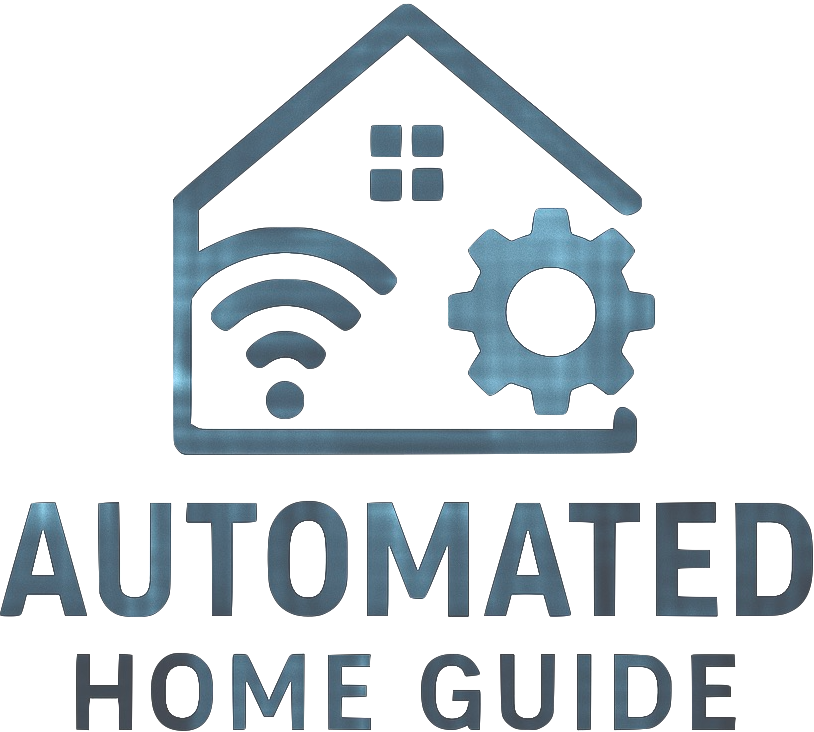
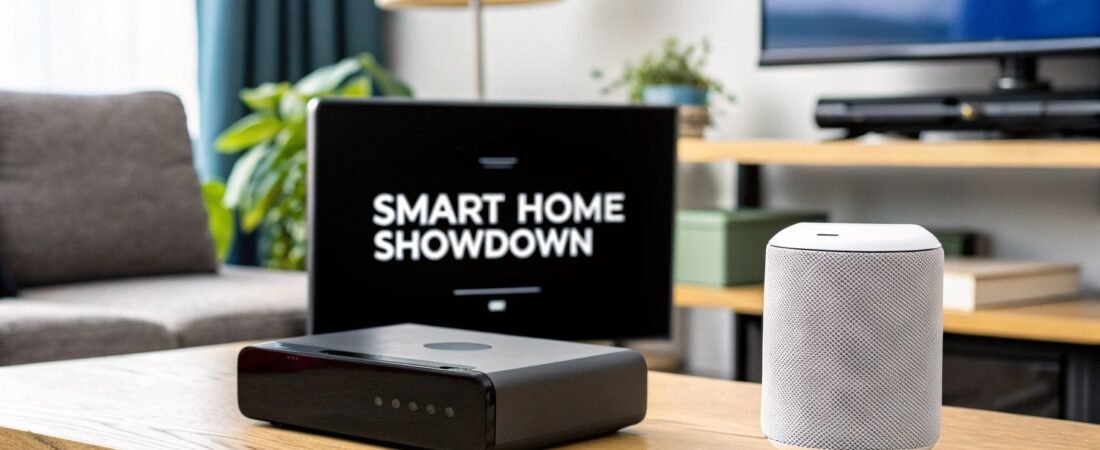



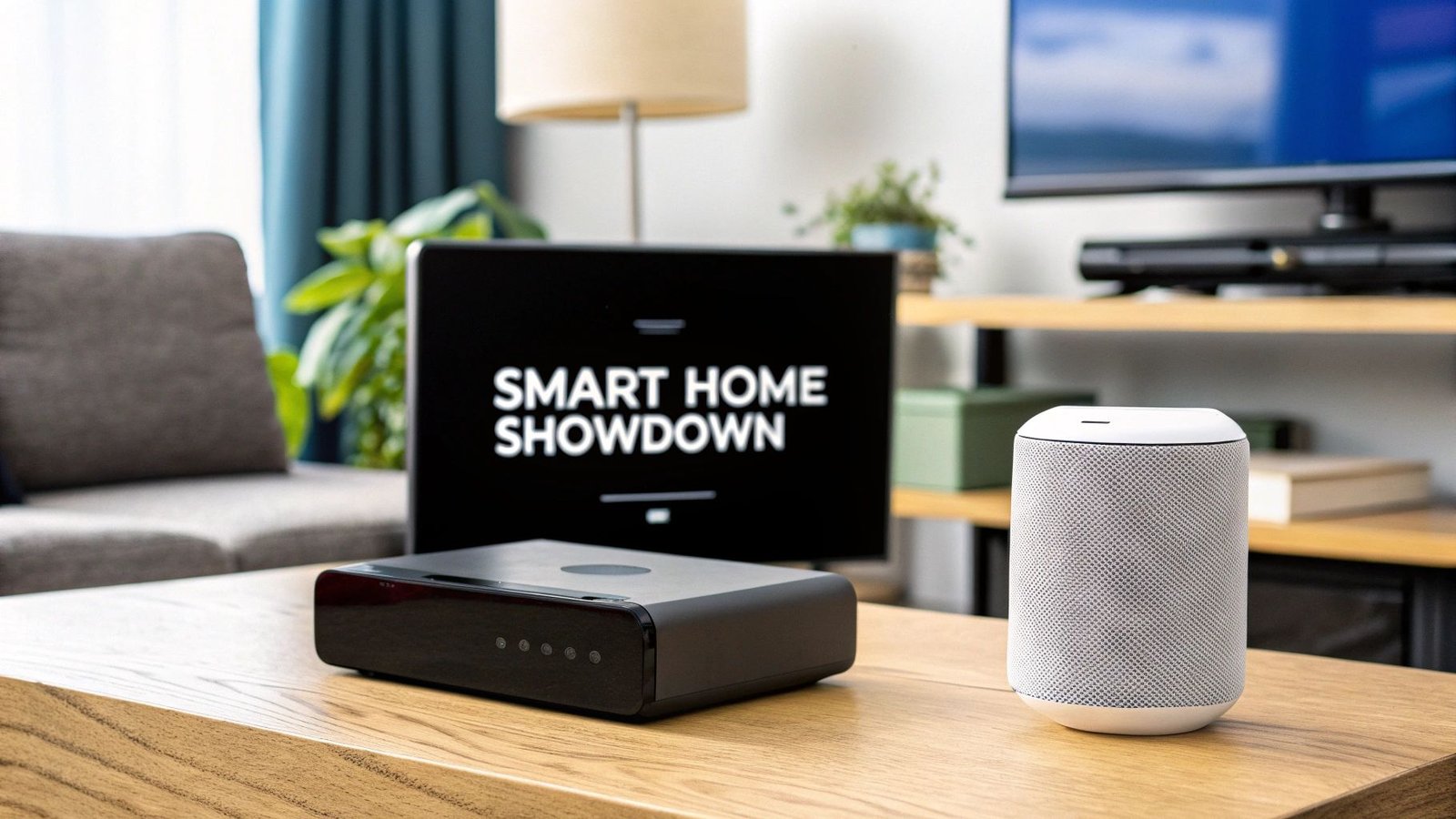



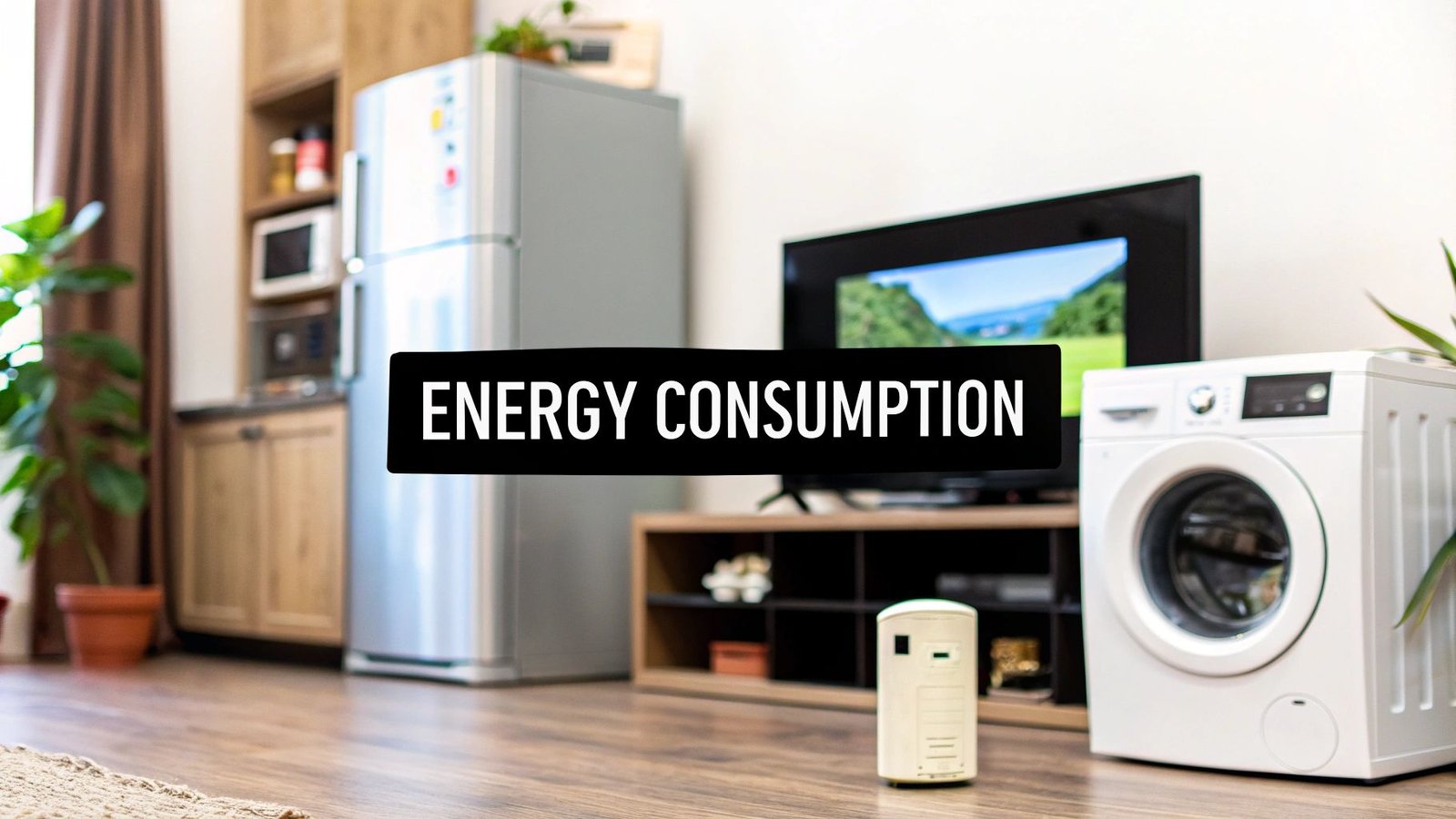
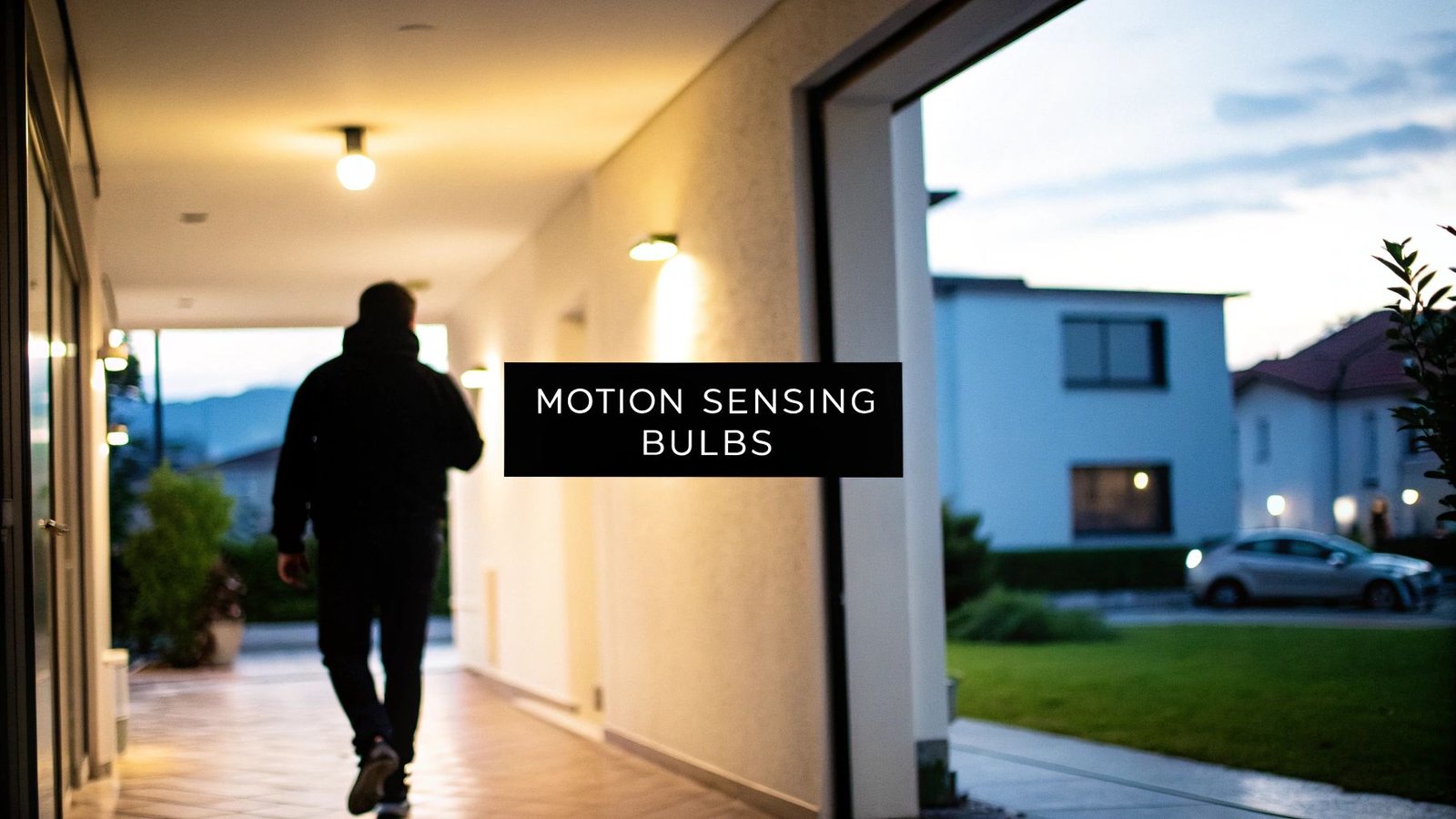
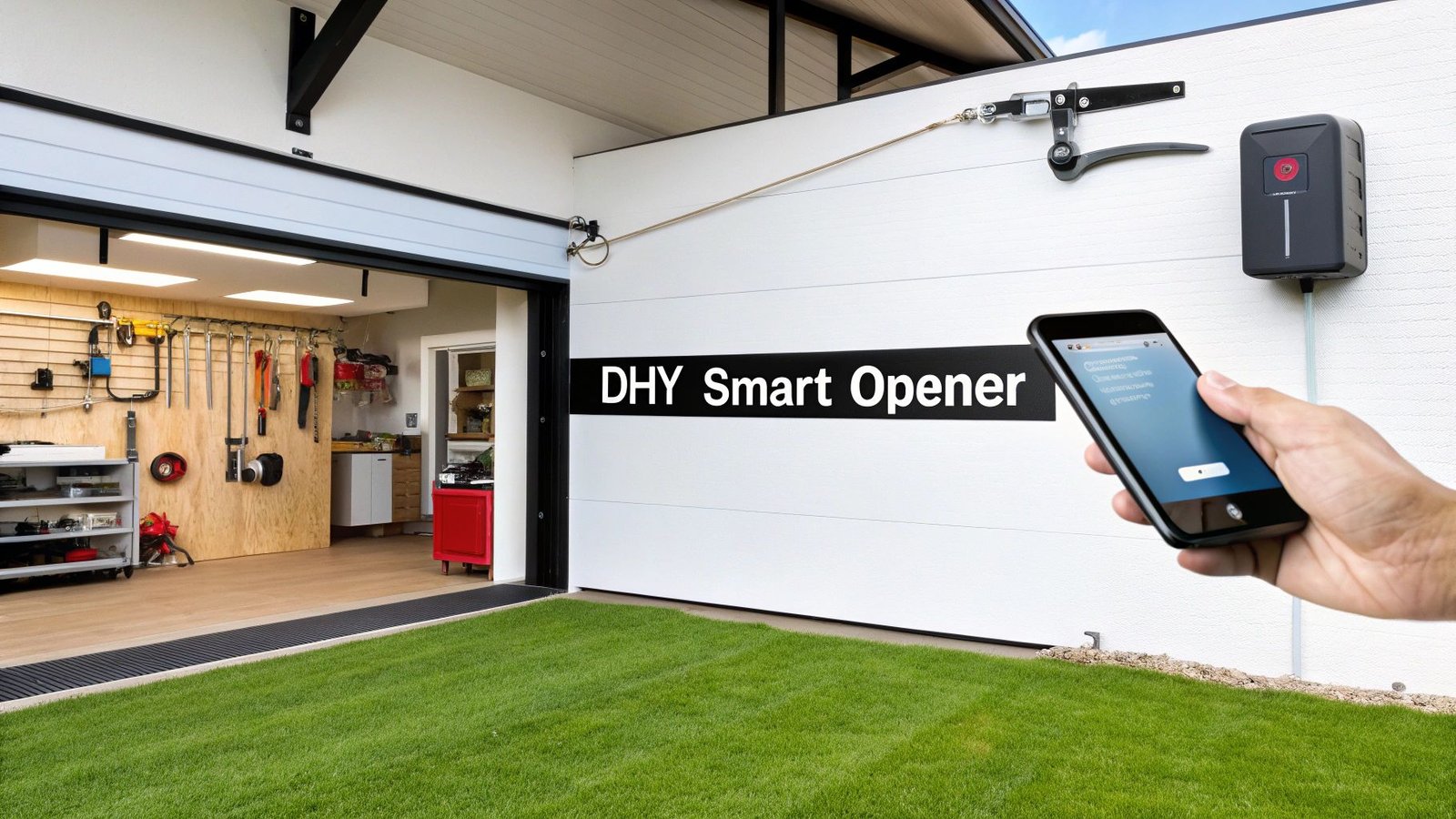
Leave a Reply